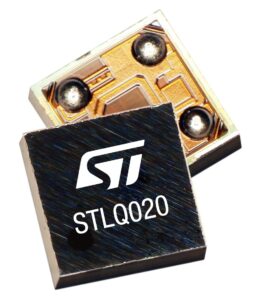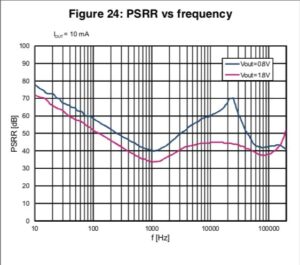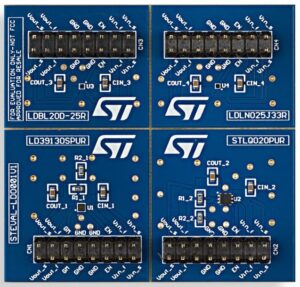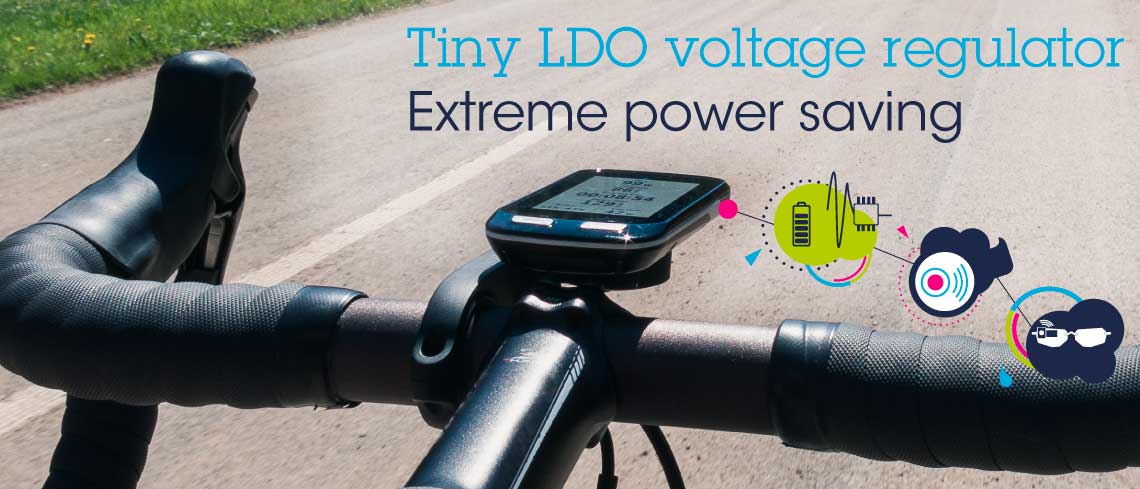To learn more about our power devices, we have a webinar covering our wide catalog.
The STLQ020, a 200 mA ultra-low quiescent current Low-Dropout (LDO) voltage regulator, is already a friend of the Life.Augmented blog. Indeed, we met the component when we delved into the multiple personalities of our four-in-one LDO evaluation board. It is still the fast transient LDO with the lowest quiescent current (IQ) today at just 300 nA at no load and 100 µA at 200 mA, and one with the lowest consumption at only 1 nA in shutdown mode. Despite its small size of 0.8 mm x 0.8 mm when using the Flip-Chip4 packaging, it is objectively a remarkable device for mobile and IoT applications. This is why we wanted to delve deeper into the new architecture that made those performances possible and see how the component will affect power devices in the long run.
As IoT continues to reshape our technological landscapes, LDOs are finding new homes every day. Indeed, as a general rule, an electronic system will draw a current from a power source and will lower its voltage to adequately feed the various components on its PCB, from the microcontroller (MCU) to the sensors, among others. When the drop is high, linear or switching regulators work like a charm. However, when the drop is low, from 3.6 V to 3.3 V for instance, their architectures tend to waste a lot of energy. As a result, engineers use LDOs because they contain a fast error amplifier that corrects voltage changes and offer the precision and efficiency to perform small drops.
A New Control Loop

As the STEVAL-LDO001V1 evaluation board shows, different families of LDOs will have different strengths, and IoT devices tend to prefer those models with a low quiescent current. Very simply, this measurement refers to the current consumption of a device at little or no load. And since sensors spend most of their time in deep sleep or waiting for a command to turn them on, the presence of multiple low quiescent current LDOs have a noticeable impact on the entire system. Additionally, the STLQ020 also has a fast and clean transient response, which is a characteristic that designers tend to underestimate. However, it is of crucial importance for IoT products, because the low-power components on the PCB need a very stable power supply, regardless of the state of the machine (idle, or full load, for instance).
Traditionally, low quiescent current LDOs were slow to respond to significant variance in the load. However, by creating an architecture that enables substantial and fast changes to the biasing circuit, we were able to come up with a control loop that could better adjust to the electrical needs of the system. For instance, at low load, the control loop is slow, thus improving quiescent current. It can also increase its performance very quickly to rapidly respond to the higher load, thus offering a similar transient response to that of more traditional LDOs with a much higher quiescent current. Hence, the control loop of the STLQ020 is unique. Our engineers drew some of their inspiration from the LD39130S that also offers a low quiescent current. However, by completely redesigning the behavior of the control loop, they were able to go beyond what was previously possible.
A Stable LDO, Even at 100,000 Hz

The new architecture of the STLQ020 also offers a good Power Supply Rejection Ratio (PSRR). This value, written in decibels, measures how well a device can regulate its output despite voltage variations in the input. In a perfect world, the PSRR would be infinite, meaning that no matter the ripples in the input, the output would remain constant. In real life, we measure the changes in the output over a frequency range to assess the performance of the device in various conditions. This value is particularly crucial for RF applications or products with tiny batteries because they are more susceptible to disproportionate ripples in the input due to interferences or inherent constraints.
Since the PSRR closely follows the transient response, the performance of the STLQ020 is not a surprise. The LDO doesn’t have the best PSRR in the industry, but its performance is so much better than competing low quiescent current LDOs that it is changing the industry. Traditionally these types of LDO behave well until about 1000 Hz. After that, the PSRR drops close to 0 dB, meaning that the regulator no longer performs its job and instead acts like a wire that lets the current pass through without any regulation. It is therefore remarkable that the STLQ020 can maintain a PSRR between 40 dB and 70 dB approximately, despite frequencies of up to 100,000 Hz. As a result, engineers building an RF or a system relying on sensors can consider our device instead of more classical models with a much higher quiescent current.
The Next Generation of Low Quiescent Current LDOs

The new architecture is such a success, we are starting to adopt it with other regulators. The control loop opens the door to new levels of performance, and we are thrilled to bring the same innovation to other families of products. However, we also understand that this approach won’t make it to every LDO. Some applications don’t need this level of performance and designers will sometimes choose devices with a higher quiescent because they are good enough. This is precisely why our development board offers four different LDOs to help engineers gauge what’s possible and what they need. We also provide an adjustable version of the STLQ020. It uses a DFN6-2×2 package, and designers can modify the output voltage by changing two resistors on the PCB, which will be helpful during debugging and prototyping.
